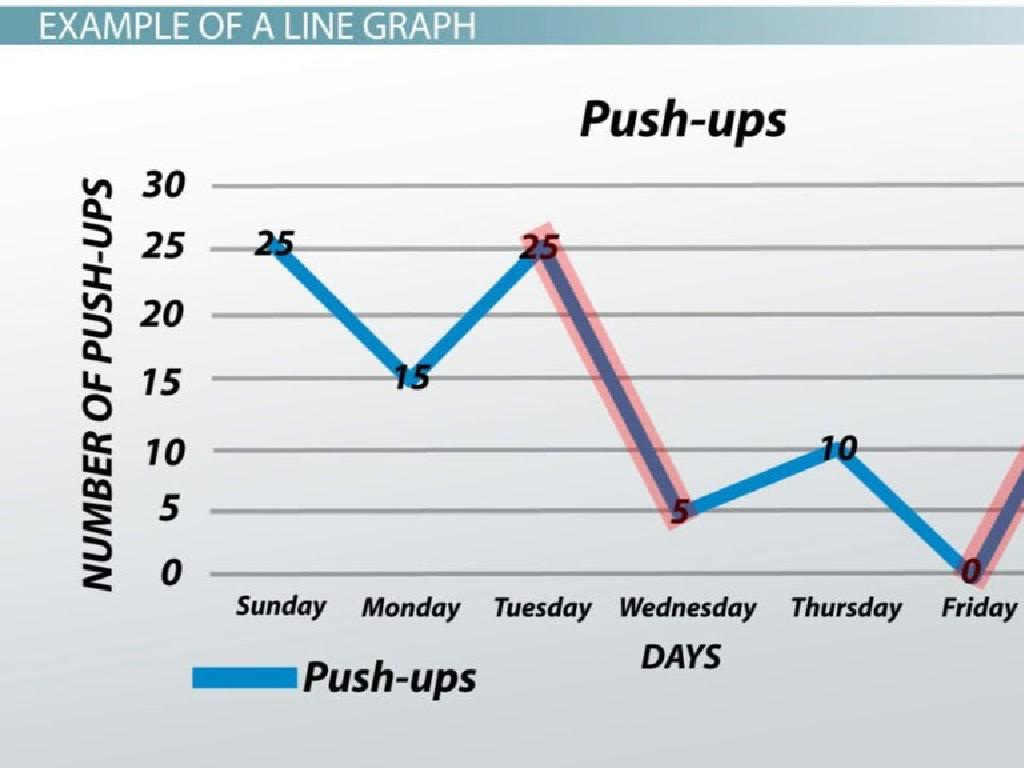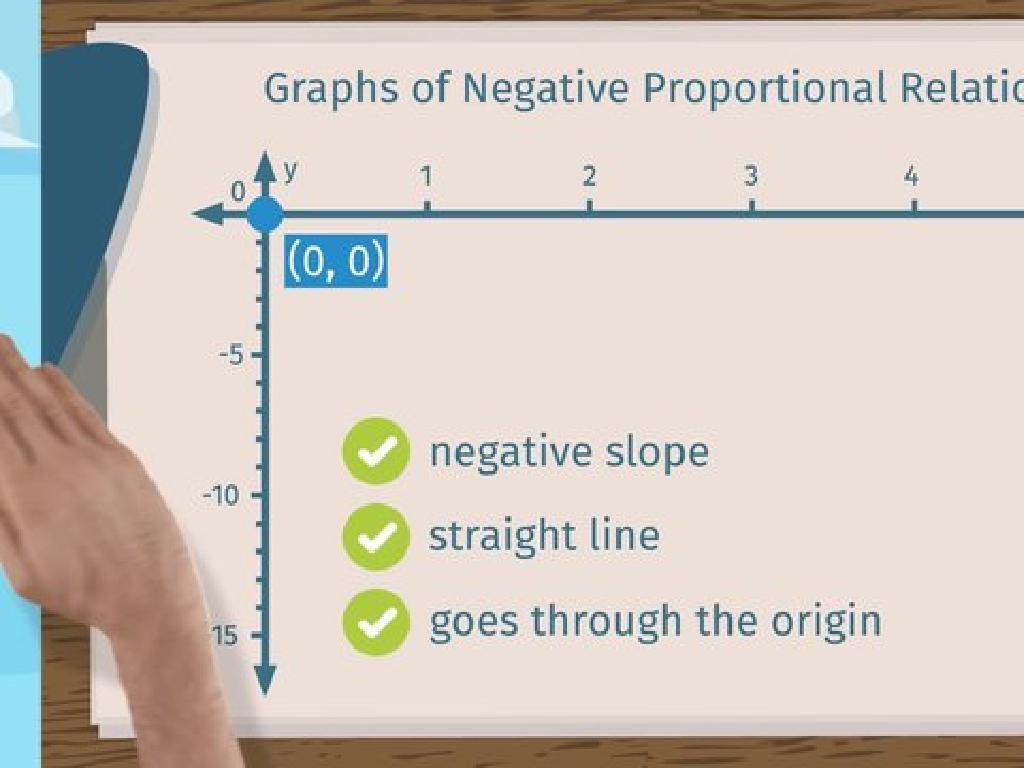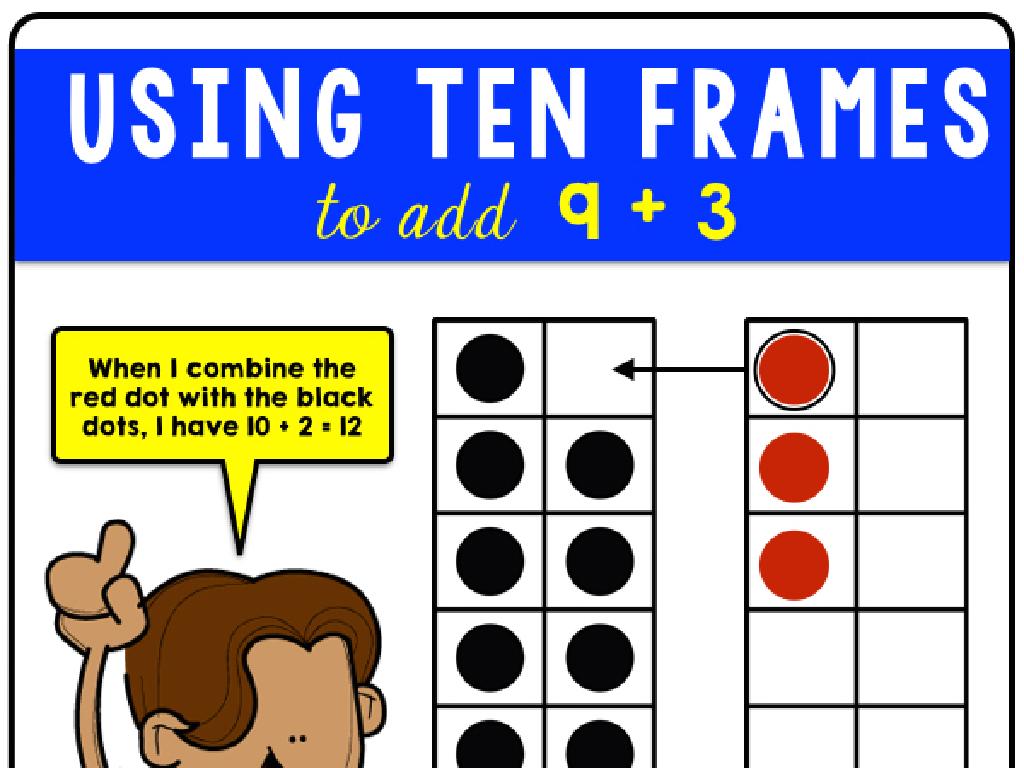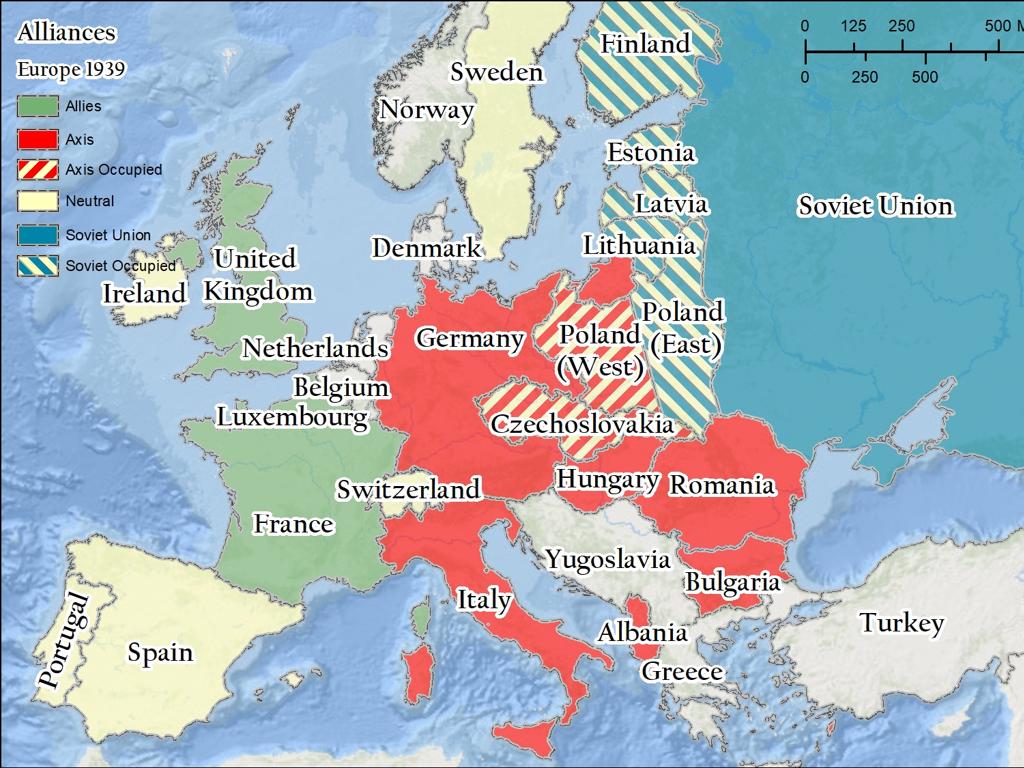Plant Cell Diagrams: Identify Parts
Subject: Science
Grade: Fourth grade
Topic: Cells
Please LOG IN to download the presentation. Access is available to registered users only.
View More Content
Exploring Plant Cells: Life’s Building Blocks
– Discover the world of cells
– Today’s focus: Plant cells
– Plant cells have parts like a nucleus, cell wall, and chloroplasts
– Cells as life’s foundation
– Cells are the smallest unit of life, making up all living things
– Unique features of plant cells
– Plant cells have a cell wall and chloroplasts, unlike animal cells
|
This slide introduces students to the concept of cells as the basic unit of life and focuses on the unique aspects of plant cells. Emphasize that while all cells share certain features, such as having a nucleus, plant cells have additional structures like a sturdy cell wall and chloroplasts, which are essential for photosynthesis. Use this opportunity to spark curiosity about how these tiny structures work together to create all the plants we see around us. Encourage students to think about the differences between plant and animal cells and why these differences are important for a plant’s survival and growth.
Exploring Plant Cells: The Building Blocks
– Cells: Life’s foundational units
– All living things are made of cells, tiny but complex.
– Comparing plant and animal cells
– Plant cells have cell walls and chloroplasts, unlike animal cells.
– Plant cells’ unique structures
– Structures like chloroplasts help in photosynthesis, making food for the plant.
– The significance of cells
– Cells are vital for growth, reproduction, and overall function of life.
|
This slide introduces the concept of cells as the basic unit of life, emphasizing their importance in all living organisms. Highlight the differences between plant and animal cells, particularly the unique structures in plant cells such as the cell wall and chloroplasts, which are crucial for processes like photosynthesis. Explain why understanding cells is fundamental to the study of biology, as they are responsible for the growth, reproduction, and various functions that sustain life. Encourage students to think of cells as tiny factories working together to keep plants and animals alive.
Discovering Plant Cells
– Unique features of plant cells
– Plant cells have parts like a cell wall and chloroplasts, unlike animal cells.
– The sturdy cell wall
– The cell wall protects and gives the cell its shape.
– Chloroplasts and photosynthesis
– Chloroplasts turn sunlight into food for the plant.
– Exploring cell parts
|
This slide introduces students to the basic structure and function of plant cells. Emphasize the unique characteristics that differentiate plant cells from animal cells, such as the presence of a cell wall and chloroplasts. The cell wall is a rigid layer that supports and protects the cell, while chloroplasts are the sites of photosynthesis, the process by which plants convert sunlight into energy. Use diagrams to help students visualize these components. Encourage students to think about why these features are important for the plant’s survival and how they contribute to the plant’s ability to grow and thrive.
Exploring Plant Cell Parts
– Cell Wall & Membrane: Cell Protectors
– The cell wall is rigid and gives the plant cell its shape, while the membrane controls what goes in and out.
– Nucleus: Commanding the Cell
– The nucleus contains DNA and directs all cell activities, like a boss in an office.
– Chloroplasts: Where Food is Made
– Chloroplasts contain chlorophyll for photosynthesis, turning sunlight into food for the plant.
– Vacuoles: The Storage Spaces
– Vacuoles are like big closets, storing water, food, and waste until the cell needs them.
|
This slide introduces the basic parts of a plant cell to fourth-grade students. Emphasize the role of the cell wall and membrane as protectors, keeping the cell safe and regulating entry and exit of substances. The nucleus should be described as the control center, managing the cell’s operations. Chloroplasts are crucial for photosynthesis, the process by which plants make their own food using sunlight. Lastly, vacuoles are storage areas within the cell, holding essential materials. Use analogies like a boss in an office for the nucleus or closets for vacuoles to make the concepts relatable. Encourage students to draw their own plant cells and label each part to reinforce learning.
Exploring the Cell Membrane
– What is a Cell Membrane?
– It’s the thin layer that surrounds the cell.
– Functions of the Cell Membrane
– It controls what enters and leaves the cell.
– Understanding Semi-Permeability
– It allows some substances to pass through.
– Importance in Plant Cells
|
The cell membrane is a crucial component of plant cells, acting as a protective barrier that regulates the movement of substances in and out of the cell. It’s important to explain to students that the cell membrane is selectively permeable, meaning it only lets certain things pass through, much like a sieve or a net. This function is vital for the cell’s survival, as it maintains the proper balance of nutrients and water inside the cell. Use analogies that fourth graders can relate to, such as comparing the cell membrane to a school’s entrance, where a guard lets certain people in and out. This will help them grasp the concept of semi-permeability. Encourage students to ask questions and think of other examples of barriers that are selective in what they allow to pass.
Exploring the Nucleus of Plant Cells
– Nucleus: The cell’s control center
– The nucleus directs all cell activities, like a brain.
– DNA: Blueprint for life
– DNA in the nucleus holds instructions for traits and growth.
– Nucleus communication with cell
– The nucleus sends messages to the cell to perform functions.
– Importance of the nucleus in cell function
|
The nucleus is often referred to as the ‘brain’ of the cell because it manages cell activities and stores DNA, the genetic material. DNA is like a set of instructions that tells the cell how to grow, develop, and reproduce. The nucleus communicates with the rest of the cell through tiny openings called nuclear pores, which allow messages to pass in and out. Understanding the nucleus helps us grasp how cells function and how traits are passed on. Encourage students to think of the nucleus as the cell’s command center, and DNA as the secret code that guides everything the cell does. This slide will help students appreciate the complexity and importance of the nucleus in plant cells.
Chloroplasts and Photosynthesis
– Chloroplasts: Plant cell kitchens
– Chloroplasts convert sunlight into energy, like a kitchen prepares food.
– Photosynthesis: Food-making process
– Plants use sunlight to turn water and CO2 into food and oxygen.
– Sunlight, water, CO2: Photosynthesis ingredients
– These are the raw materials plants need to create their food.
– Importance of photosynthesis for life
|
This slide introduces students to the concept of chloroplasts and photosynthesis. Chloroplasts are described as the ‘kitchen’ of the plant cell where food is prepared. Photosynthesis is the process by which plants use sunlight to convert water and carbon dioxide into glucose, their food, and oxygen, which is essential for life on Earth. Emphasize the importance of sunlight, water, and carbon dioxide as the key ingredients for this process. The slide aims to help students understand the critical role of photosynthesis in the survival of plants and, by extension, all living organisms that rely on plants for oxygen and food.
Vacuoles: The Storage Centers of Plant Cells
– What are Vacuoles?
– Vacuoles are like storage bins inside plant cells.
– Vacuoles’ role in cells
– They store water, food, and waste materials.
– Keeping plants healthy
– They help keep plants firm and fight off illness.
– Vacuoles’ importance
|
Vacuoles are essential components of plant cells, acting as storage centers. They are large, enclosed compartments that hold materials such as water, nutrients, and waste products. This slide will explain to students that vacuoles are like the storage bins or the backpacks of the cell, holding important items the cell needs to survive. They play a critical role in maintaining the structure of the plant by storing water, which keeps the plant cells turgid, and thus, the plant upright. Vacuoles also help in the breakdown of waste products and in the defense against pathogens. Understanding vacuoles will help students appreciate how plant cells function and maintain the health of the plant. Encourage students to think of vacuoles as the ‘pantry’ of the cell, storing all the essential materials needed for the cell’s survival and well-being.
Plant Cell: A Tiny Factory
– Review plant cell parts
– Recall the nucleus, mitochondria, chloroplasts, and more
– How parts work together
– Like a team, each part has a special job to keep the cell alive
– Each part’s role for survival
– Without one part, the cell might not function properly
– Relate to a small factory
– Think of the cell as a factory where every piece is crucial
|
This slide aims to consolidate the students’ knowledge of plant cell parts and their functions. Begin by reviewing the various parts of a plant cell, such as the nucleus, mitochondria, chloroplasts, cell wall, and cell membrane. Explain how these parts work in unison to keep the cell functioning, much like different departments in a factory. Emphasize the importance of each part by discussing what could happen if one part stopped working, drawing parallels to a factory where every role is vital for the whole operation. This analogy helps students understand the complexity and interdependence of cell parts. Encourage students to ask questions and think of other analogies that could represent the workings of a cell.
Class Activity: Build Your Own Plant Cell
– Gather materials for cell model
– Create cell parts with Play-Doh
Use different colors for parts like the nucleus, chloroplasts, and cell wall.
– Label each cell component
Make sure each part like mitochondria and vacuoles are labeled.
– Present your cell model
Explain what each part does, like how chloroplasts help in photosynthesis.
|
This hands-on activity is designed to help students learn about plant cell structures by building their own 3D models. Provide students with Play-Doh, labels, and plastic bags. Each color of Play-Doh can represent a different cell part, such as green for chloroplasts and red for the nucleus. After constructing the cell, students should use the labels to correctly identify each part. Encourage creativity but also accuracy in their models. Once completed, students will present their models to the class, explaining the function of each cell part, which reinforces their understanding of the cell’s components and their roles. Possible variations of the activity could include using different materials or creating a poster instead of a 3D model.






